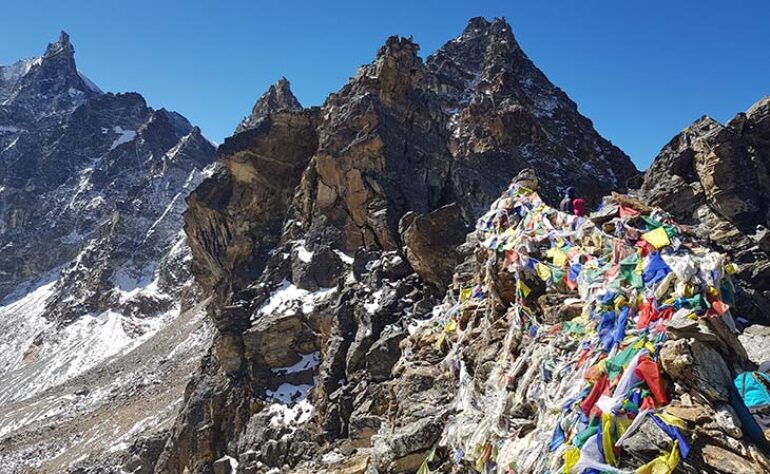
27 Apr 2023 Outdoor Himalayan
Outdoor Himalayan Treks present the article “Weather in Everest Region-A Complete Guide”. The Everest region, nestled in the Himalayas, is a fascinating dream destination that draws adventurers and climbers from all around the globe. The breathtaking panoramas of snow-capped peaks, quaint villages, and an abundance of natural beauty mesmerize everyone. At the heart of the Everest region stands the world’s tallest Mount Everest, attracting both seasoned and first-time trekkers.
Everest Base Camp trekking is every trekker enthusiast’s dream. It’s wise to be prepared beforehand venturing for Everest Treks. Accommodation, meal, transportation, elevation, and weather plays a vital role. The weather in this Everest region can vary greatly depending on the time of year and the altitude you are at. Here is a complete guide to the weather in the Everest Region:
Spring (March to May) in Everest Region
Spring is the best season for the Everest region treks. This season is more pleasant and fun to trek as the skies are clear, and the weather is mild. With mild warm temperatures during the day and slightly cooler during the night making it a perfect to trek. There is less or no chance of rainfall or snowfall which is great as it is comfortable to walk on the trails. Admire the seasonal blossoming flowers, surrounding landscapes, and the phenomenal views of the majestic mountains throughout the trek during this season. Get ready to meet crowd of trekkers during the trek as it is the peak and best season.
Spring Day Temperature: 7°C to 15°C
Spring Night Temperature: 5°C to (-10°C)
Sunshine Hour Daily: 7 hours
Wind Speed: 14 km/hour
Precipitation: 15 mm
Accommodation: Abundant Teahouses/Luxury Hotel
Meals: From basic Dal-Bhat to a variety of options (eggs, pancakes, pizza, coffee, etc.)
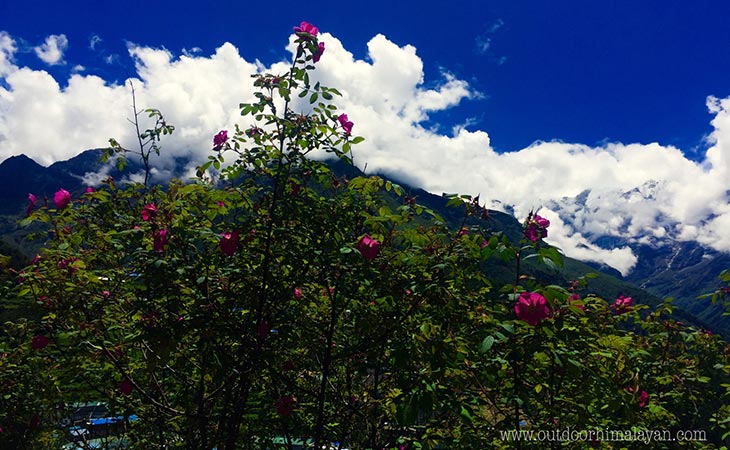
Autumn (September to November) in Everest Region
Autumn is the second favorite season to trek in the Everest region. This season offers great spectacular views, a comfortable trail to walk, and clear skies with a mild temperature during the day. The beautiful landscapes and the panoramic mountain views are awesome. The trails are crowded but the trek during Autumn is worth it.
Autumn Day Temperature: 12°C to 15°C
Autumn Night Temperature: 0°C to (-10°C)
Sunshine Hour Daily: 7 hours
Wind Speed: 13 km/hour
Precipitation: 30-50 mm
Accommodation: Abundant Teahouses/Luxury Hotel
Meals: From basic Dal-Bhat to a variety of options (eggs, pancakes, pizza, coffee, etc.)
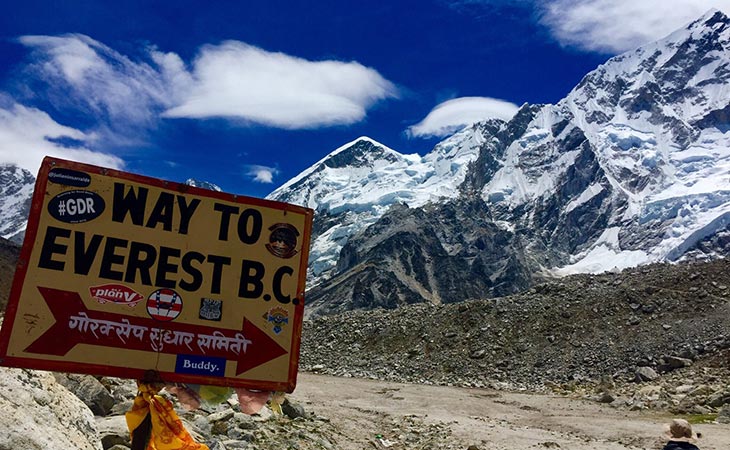
Monsoon (June to August) in Everest Region
Monsoon season for Everest treks is not much favorable as it is very challenging. The unpredictable weather, with heavy rainfall, high humidity, and low visibility makes it difficult to trek during this season. The trails are muddy and slippery which is risky and hard to trek. The mountain views are often hidden by clouds, but the lush greenery may be beautiful. To navigate the trails also it is difficult during monsoon.
And, many of the teahouses and lodges along the trekking route are closed due to the fewer number of trekkers, making it challenging to find suitable accommodations and adjust to limited meals option. Though monsoon season is less favorable, it is attempted by daring trekkers for fun and excitement.
Monsoon Day Temperature: 15°C to 20°C
Monsoon Night Temperature: 5°C to 0°C
Sunshine Hour Daily: 5 hours
Wind Speed: 16 km/hour
Precipitation: 100-130 mm
Accommodation: Very Limited Teahouses/Lodges
Meals: Very Limited Meal options
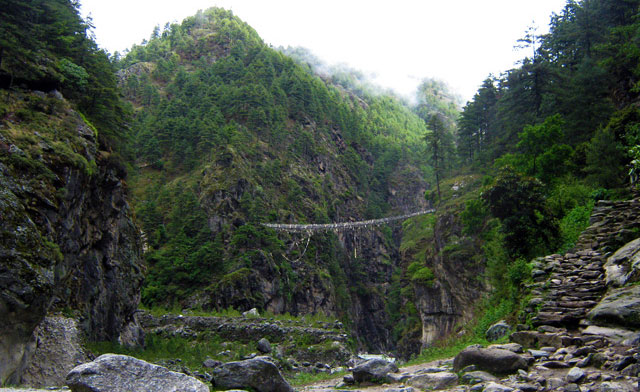
Winter (December to February) in Everest Region
The winter season is the coldest in the Everest Region with extremely cold temperatures. The temperature drops and as the elevation increases it’s very cold and chilly. The skies are usually clear, but there is a higher chance of snowfall. Winter is the least favorable as the days are shorter with fewer daylight hours. There is also an increased risk of avalanches. Most of the teahouses/lodges are closed and hence left with limited and basic facilities.
The cold temperature, shorter days, unpredictable weather, snowfall, and avalanches are some challenging factors to trek during the winter season. With full consultation from experts, the trek during winter is possible but you should follow all safety measures. You should be solely responsible to trek during winter.
Winter Day Temperature: 5°C to 10°C
Winter Night Temperature: 0°C to (-30°C)
Sunshine Hour Daily: 7 hours
Wind Speed: 40 km/hour
Precipitation: 5-10 mm
Accommodation: Very Limited Teahouses/Lodges
Meals: Very Limited Meal options
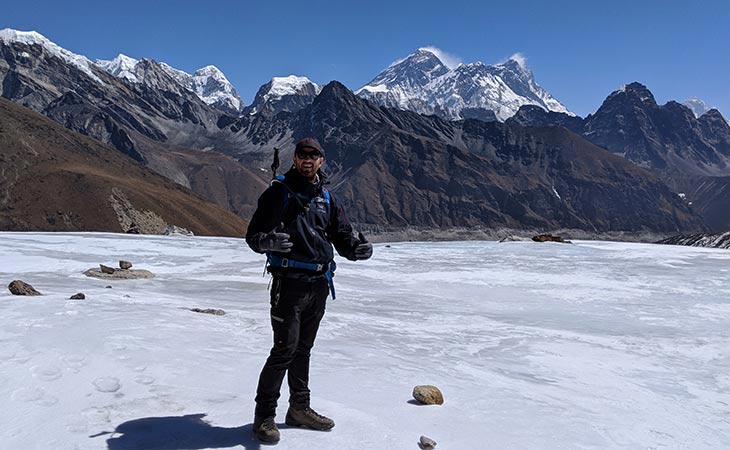
It is important to be prepared for sudden changes in the weather, especially at higher altitudes. It is suggested to check the weather forecast regularly and to consult with a local guide or trekking agency for the latest information. Also, pack appropriately, regardless of the time of year, when preparing to embark on a journey to the Everest region.
Consult with a travel agency for a comprehensive list of essential clothing and materials for various weather conditions. These practical approaches guide the trekkers to be fully prepared for any possible scenario, allowing them to enjoy their Everest trek journey to the fullest.
TAGS: Autumn (September to November) in Everest Region Everest region Monsoon (June to August) in Everest Region Mount Everest Spring (March to May) in Everest Region Weather in Everest Region-A Complete Guide Winter (December to February) in Everest Region

